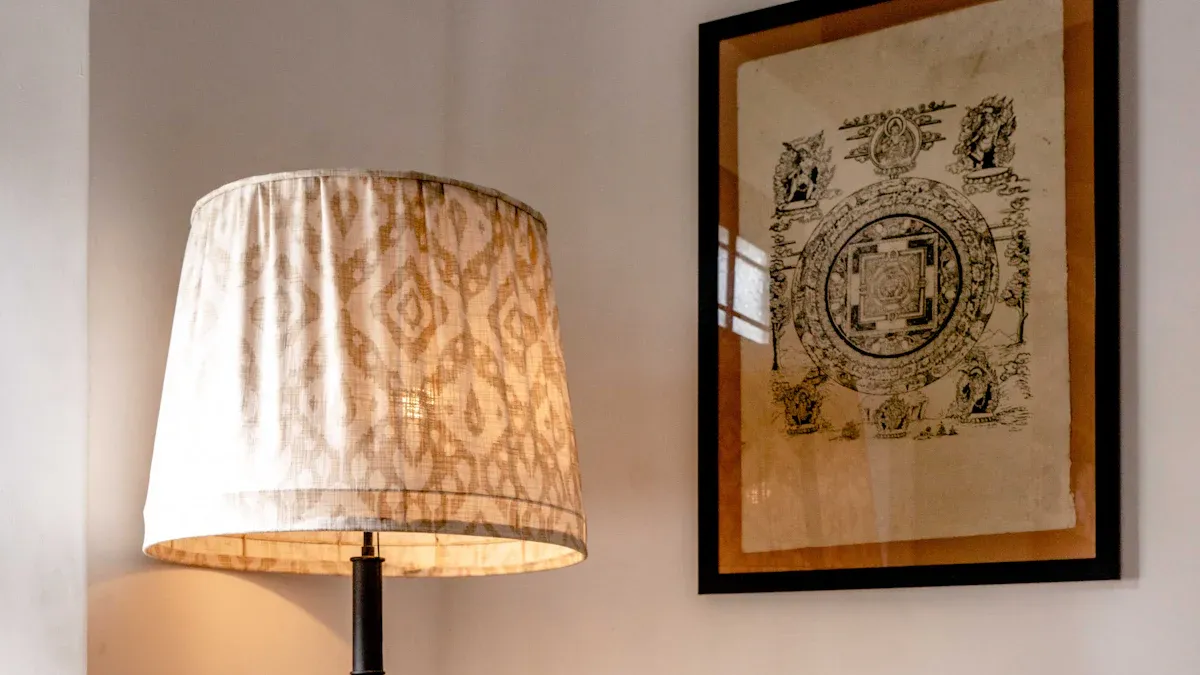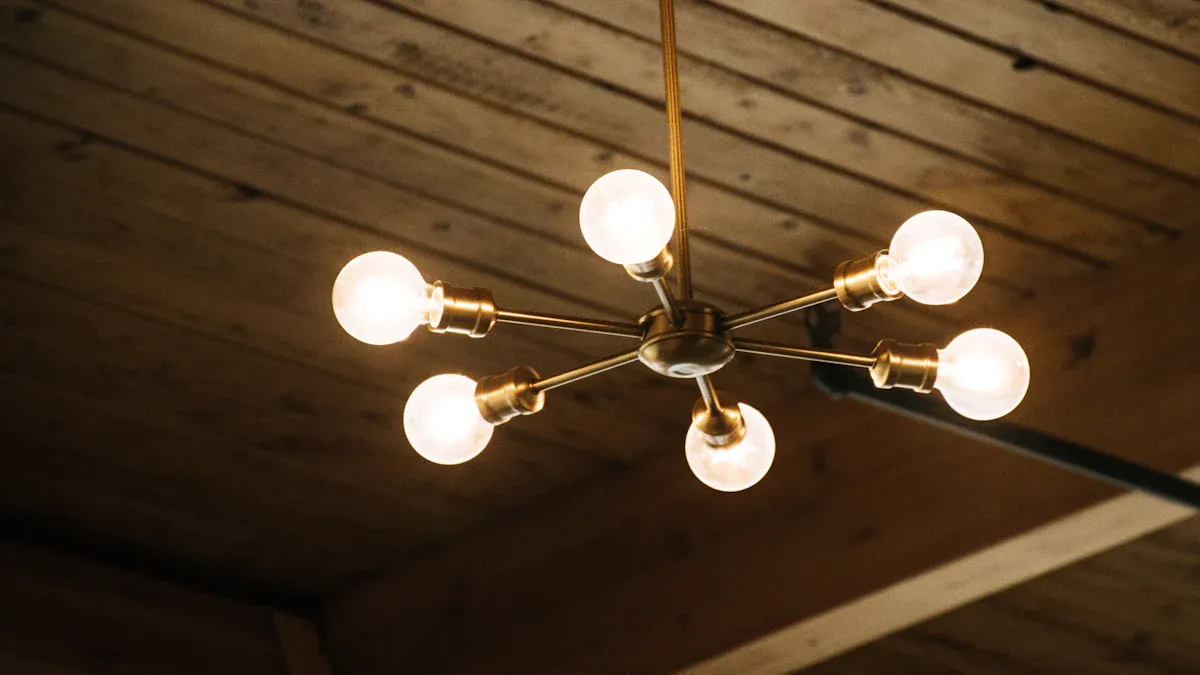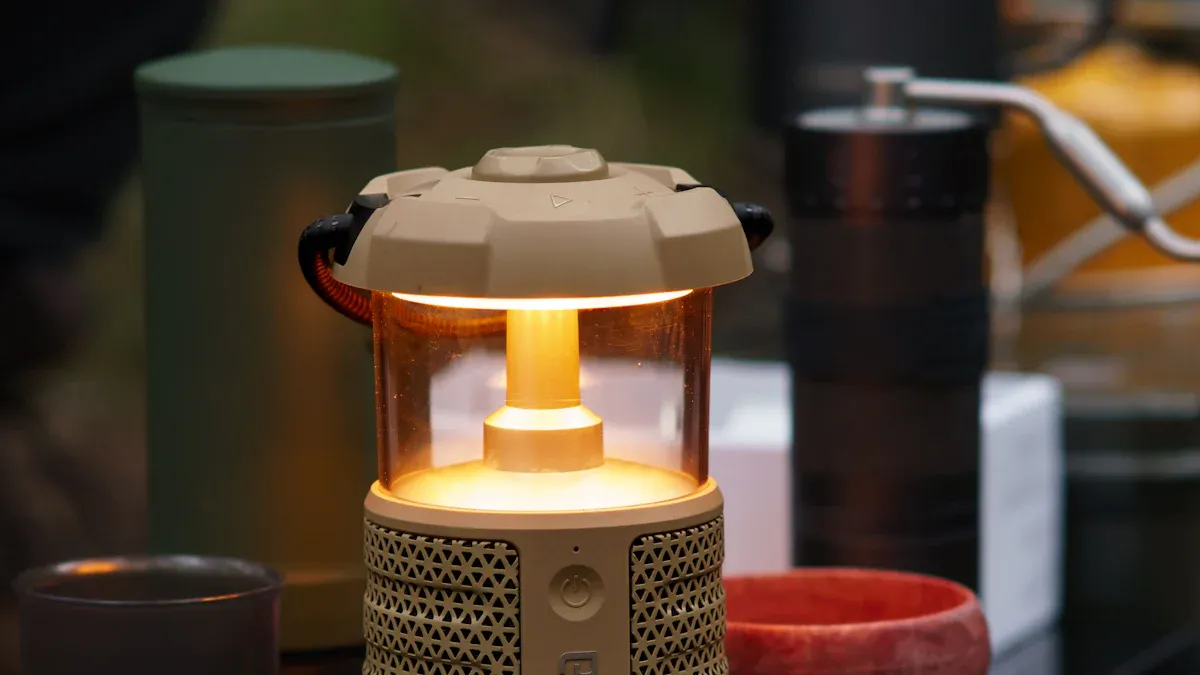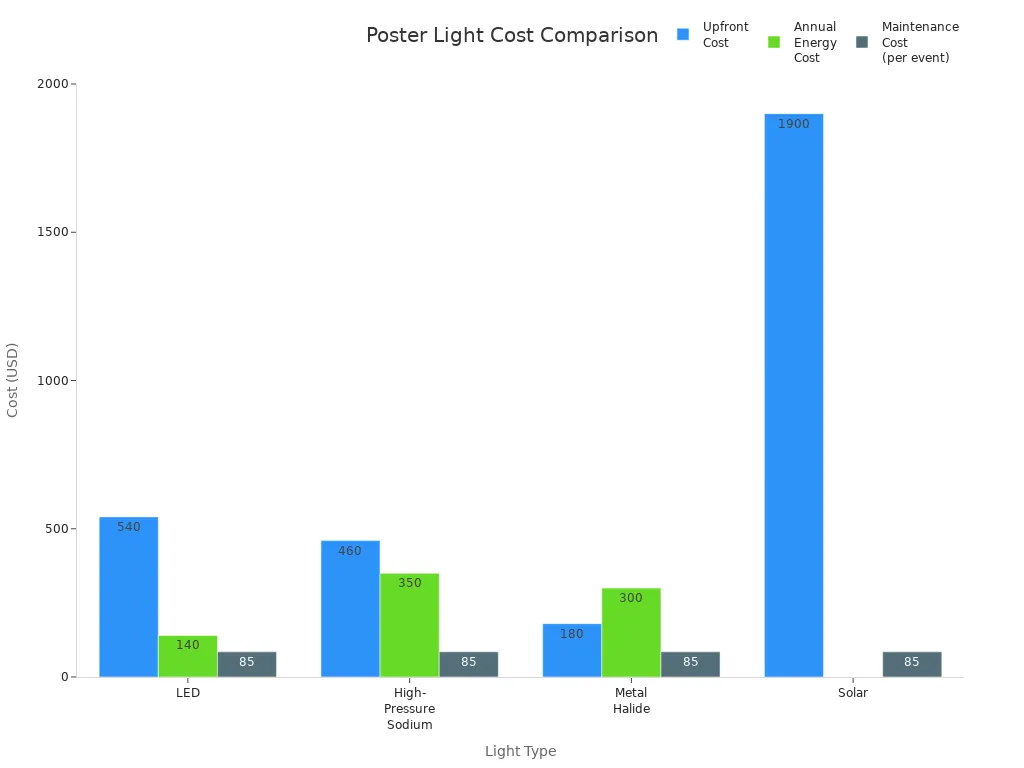Poster Light Options: From Battery-Powered to Hardwired Solutions for Every Need

You have many poster light options to brighten your favorite art or posters. Choose from battery-powered, rechargeable, hardwired, or USB-powered lights. The right lighting can make your art stand out and protect it from damage. Good poster light options also help you see details clearly. Think about your space and how you want to install your lighting. If you rent, you may need different solutions than if you own your home.
Key Takeaways
You can pick hardwired, battery-powered, rechargeable, or USB-powered poster lights. Think about your space and what you need. Hardwired lights are very bright and steady. They look neat but need a pro to put them in. They also cost more at first. Battery-powered and USB-powered lights are simple to set up. You can move them easily. They are good for people who rent or change art a lot. Good lighting makes your art look better. It helps colors and details stand out. It also sets the mood and keeps art safe from things like fading or heat. Think about how easy it is to install, how handy it is, how well it works, and the price. This will help you choose the best light for your home or display.
Poster Light Options
Types of Picture Lights
There are different kinds of picture lights for posters and art. Each kind has its own good points. Here are the main types you can pick:
Hardwired picture lights hook up to your home’s power. You will not see any wires. Many have easy switches and look nice.
Battery-operated picture lights use batteries you can change. You do not need to mess with wires. These are fast to set up, but you must turn them off to save power.
Rechargeable picture lights have batteries you can charge with a USB. Some have magnets so you can take them down and charge them. You do not need to buy new batteries, but you must remember to charge them.
USB-powered picture lights get power from a USB port. They are like rechargeable lights but stay plugged in while you use them.
These picture lights give you different ways to light up your posters. You can pick what works best for your space.
Key Differences
When you look at poster light options, you will see some big differences. Hardwired lights stay in one place and look neat. Battery-operated and rechargeable lights are easy to move if you change your displays a lot.
💡 Tip: LED picture lights can last a very long time. Clean them and use them right to help them last even longer.
Outdoor poster lights need to be safe from dust, rain, and heat or cold. Indoor picture lights do not need as much care. If you want to save money, pick energy-saving lights. A good warranty and support help your lights last longer.
There are many poster light options for you. Think about how often you want to change your lights, how much work you want to do, and how you want your posters to look.
Why Lighting Matters
Impact on Art and Displays
You might not realize how much lighting changes the way you see art. Experts from Robert Lange Studios say that lighting shapes color, detail, and mood. When you use the right picture lighting, you highlight special features and create depth. This can transform the way art is perceived and make your posters or paintings stand out.
Lighting does more than just brighten a room. It sets the ambiance and draws attention to your favorite pieces. Museums spend a lot of time and money on lighting because they know its importance. Good lighting guides your eyes, sets the mood, and helps you enjoy the art more. Soft, even lighting can make colors look true and textures pop. Harsh or uneven lighting can hide details or create unwanted shadows.
Note: Different types of art need different lighting. Oil paintings, watercolors, and photos all react differently to light. Even lighting helps you avoid harsh shadows and keeps your art looking its best.
Here are some ways lighting affects your art and displays: 1. It makes colors, textures, and contrasts look better. 2. The angle and strength of the light change how you see the art. 3. Even lighting stops shadows and glare. 4. Good lighting can increase the value and appeal of your art.
Safety and Convenience
Picture lighting also keeps your art safe. Direct sunlight or strong bulbs can fade colors and damage materials. When you choose the right lighting, you protect your art from harm. Many picture lighting options use LED bulbs, which stay cool and last a long time. This means less risk of heat damage and fewer bulb changes.
You also want lighting that fits your space and lifestyle. Battery-powered or USB lights work well if you move your displays often. Hardwired lights are great for permanent setups. Easy-to-use lighting makes it simple to enjoy your art every day. Effective lighting not only boosts the visual impact but also makes your space safer and more inviting.
Hardwired Lights

How They Work
Hardwired modern picture lights connect directly to your home’s electrical system. You do not need to worry about changing batteries or finding a plug. These lights use wires hidden inside your walls, so your display looks clean and professional. When you turn on hardwired modern picture lights, you get steady and bright light every time. Many hardwired options let you add dimmer switches for more control.
Pros and Cons
Here is a table to help you compare hardwired modern picture lights with other lighting choices:
Feature | Hardwired Modern Picture Lights | Other Options |
|---|---|---|
Brightness | High and even | Lower |
Frame Profile | Bulkier | Slim |
Display Size | Great for large displays | Less ideal for large |
Energy Use | Higher | Lower |
Upfront Cost | Higher | Lower |
Hardwired modern picture lights give you bright, even light and make your art look its best. You get crisp images and true colors. These lights work well for big posters. The main downside is the higher cost and energy use.
Best Uses
You should pick hardwired modern picture lights if you want a permanent, elegant solution. These lights work best in living rooms, bedrooms, and kitchens. If you do not have a plug nearby, hardwired modern picture lights are a smart choice. They give your space a classic look and avoid messy cords. Hardwired options are perfect when you want to show off your art for a long time.
Tip: Hardwired modern picture lights are great for jumbo posters and important art pieces.
Installation Tips
Installing hardwired modern picture lights takes some skill. Here are the basic steps:
Run Romex electrical wiring through a conduit to the light.
Twist wires together with flathead pliers, then secure with wire nuts and tape.
Attach ground wires to the ground screw or connect with a green wire.
Secure conduit fittings and remove brackets if needed.
Strip about 3/4 inch of insulation from each wire.
Insert wires into the color-coded holes on the fixture.
For more than one light, cut Romex to length and connect each light at the right spot.
Attach the housing cover and diffuser carefully.
You need basic electrical tools and knowledge. If you are not sure, ask a professional for help. Hardwired modern picture lights give you a long-lasting and safe lighting solution.
Battery-Powered Lights

How They Work
Battery-operated picture lights run on regular or rechargeable batteries. You put AA or lithium batteries inside the light’s compartment. The LED bulbs give off bright light and do not get hot. Many of these lights let you change the brightness or use a remote. Some models have a USB cord for charging if you use rechargeable batteries. You can move these lights anywhere because they do not need a plug.
Here is a quick look at battery life and when you need new batteries:
Battery Life Category | Typical Battery Types | Usage and Replacement Implications |
|---|---|---|
Short (10-20 hours) | Standard alkaline or low-capacity rechargeables | Good for short-term use; you need to replace or recharge often. Cost stays low, but you do more maintenance. |
Medium (20-50 hours) | Higher-capacity alkaline or NiMH rechargeables | Works well for longer displays; you replace or recharge less often. Balances cost and ease of use. |
Long (50+ hours) | Lithium or high-capacity Li-ion rechargeables | Best for long-term or remote use; higher cost, but you rarely replace or recharge. |
Pros and Cons
Battery-operated picture lights have many good points, but also some downsides. Here is a table to help you compare:
Aspect | Details |
|---|---|
Pros | - No wires, so you can move them anywhere. You can charge in 1 hour and use for up to 3.5 hours. |
- USB cord lets you charge with any USB port. | |
- You can change the brightness for different art and rooms. | |
- Great for artists who move art or work outside. | |
Cons | - Not as bright as plug-in or hardwired lights. |
- Can cost more than some bigger corded lights. | |
- Small size may not work for very big posters. |
Note: Battery-operated picture lights let you put art anywhere, but you might need to change or charge batteries a lot.
Best Uses
Use battery-operated picture lights if you want to move them often. These lights are good for renters, students, or people who change art a lot. You can use them for art shows, gallery walls, or holiday decorations. Battery-powered lights are helpful where there are no outlets. If you like to move your art or need light in different rooms, these lights are a good choice.
Installation Tips
You can put up battery-operated picture lights in a few easy steps: 1. Pick the spot above your poster or art. 2. Use the mounting hardware or sticky strips that come with the light. 3. Put in the batteries or charge the light if you need to. 4. Attach the light to the wall or frame. 5. Change the angle and brightness until it looks right.
Tip: Always check the battery before big events. Keep extra batteries or a charger close by so you can swap them fast.
Rechargeable and USB-Powered Lights
How They Work
You can use rechargeable and USB-powered lights to brighten your posters without needing to change batteries often. These lights have built-in batteries that you charge with a USB cable. Some models attach to the wall with magnets or clips, so you can remove them easily for charging. Others work as a plug-in light fixture, drawing power directly from a USB port or adapter. You get steady light as long as the battery lasts or the light stays plugged in.
Pros and Cons
Here is a table to help you see the main advantages and disadvantages:
Pros | Cons |
|---|---|
Easy to recharge with USB | Need to remember to recharge |
No need for new batteries | Battery life may limit use time |
Portable and lightweight | Some models less bright than wired |
Simple to install and remove | May need frequent charging for large art |
Tip: You can use rechargeable picture lights for displays that change often or for spaces without outlets.
Best Uses
You should pick these lights if you want flexibility. They work well for renters, students, or anyone who moves art around. You can use them in dorm rooms, offices, or rented apartments. Rechargeable picture lights also help in places where you cannot run wires or drill holes. If you like to update your displays or need a quick lighting fix, these lights make a smart choice.
Installation Tips
You can install these lights in just a few steps:
Choose the spot above your poster or art.
Use the included adhesive, screws, or magnetic mounts to attach the light.
Plug in the USB cable to charge the light fully before first use.
Adjust the angle to shine light evenly on your display.
For plug-in models, keep the USB cable tidy to avoid clutter.
Note: Always check the battery level before important events. Keep your USB cable handy for quick recharging.
Comparison
Installation
When you choose a poster light, you need to think about how easy it is to install. Some lights take only a few minutes, while others need a professional. Battery-powered lights are the easiest. You can put them up without tools or help. USB-powered lights are also simple. You just plug them in and hang them where you want. Hardwired lights take more work. You need an electrician to connect them to your home’s wiring. This makes them a better choice for permanent displays.
Here is a summary table to help you compare:
Light Type | Installation Ease | Tools Needed | Professional Help |
|---|---|---|---|
Battery-Powered | Very easy | None | No |
USB-Powered | Easy | Maybe screwdriver | No |
Hardwired | Difficult | Electrical tools | Yes |
Tip: If you rent your home or move often, pick a light that you can install yourself.
Convenience
You want your lighting to fit your life. Battery-powered lights give you the most freedom. You can move them anywhere and do not need to worry about cords. USB-powered lights are also flexible, but you need an outlet nearby. Hardwired lights stay in one place. They look neat because you do not see any wires, but you cannot move them easily.
Here is a table that shows the main convenience factors:
Convenience Factor | Battery-Powered | USB-Powered | Hardwired |
|---|---|---|---|
Installation Ease | Quick, no tools needed | Easy, needs outlet | Needs electrician |
Mobility | Highest | Moderate | Low |
Power Source | Batteries | Wall outlet | Home wiring |
Appearance | No cords | Visible cords | No cords |
Control Options | Switch/remote | Switch on cord | Wall switch/dimmer |
Flexibility | Very high | High | Low |
Renters and students like battery-powered or USB-powered lights. You can put them up without making holes or calling an electrician.
Homeowners who want a clean look often choose hardwired lights.
If you move your art often, battery-powered and USB-powered lights work best.
Performance
Performance means how well your lighting shows off your art. Hardwired lights give you steady, bright light. They work well for big posters or important displays. USB-powered lights also give good light, but you might see cords. Battery-powered lights are bright enough for small or medium art, but they may not work as well for large displays.
The quality of the light matters too. Some lights have a high color rendering index (CRI). This means colors look true and details stand out. Brightness does not always mean better color. Lights with high CRI and smooth color output make your art look its best. If you want your art to shine, look for lights with a high CRI and the right color temperature.
Note: Brightness and color quality are not the same. Pick lighting that makes your art look natural and clear.
Cost
You need to think about both the price to buy and the cost to use your lighting. Battery-powered lights cost less at first. You may spend more over time on batteries or charging. USB-powered lights have a low upfront cost and use little energy. Hardwired lights cost the most to install. You pay for the fixture and for an electrician. They use more energy but last a long time.
Here is a table that shows the average costs:
Light Type | Upfront Cost (Fixture + Install) | Annual Energy Cost | Maintenance Cost per Event |
|---|---|---|---|
LED (Hardwired) | $540 | $140 | $50 – $120 |
USB-Powered | $20 – $60 | $5 – $15 | $0 – $10 |
Battery-Powered | $15 – $50 | $10 – $30 (batteries/charging) | $0 – $10 |

Note: Hardwired lighting costs more at first, but you do not need to replace batteries. Battery-powered and USB-powered lights save money if you want a quick, easy solution.
Which Type Is Best for You?
If you rent or move often, battery-powered and USB-powered lights are best. You can install them yourself and take them with you.
If you love DIY projects, USB-powered lights let you set up your own display without much work.
If you want a permanent, clean look for your art, hardwired lighting is the top choice. You get steady power and no visible cords.
Art collectors and gallery owners often pick hardwired lights for the best performance and a professional look.
Remember: Think about your space, how often you change your art, and how much work you want to do. The right lighting helps your art stand out and keeps your display safe.
Choosing the Right Lighting Solution
For Renters
If you rent your home or live in a dorm, you want a solution that will not damage the walls. When choosing the right lighting solution, look for battery-powered or USB-powered lights. These options are easy to install and remove. You can use command strips, mounting putty, double-sided tape, or 3M strips to hang your lights. These products do not leave marks or holes. Double-sided velcro also works well and lets you move your lights as needed.
Tip: Avoid duct tape or strong mounting tape. These can damage paint and make removal hard.
For Art Collectors
As an art collector, you want your collection to look its best. When choosing the right lighting solution, focus on features that protect and show off your art. Pick LED lights with a high color rendering index (CRI of 90 or above). This helps colors look true and bright. Choose warm light with a lower Kelvin value to make your art feel natural. Make sure the fixture fits the size of your art. Place your lighting at a 30-degree angle to reduce glare and shadows. LED lights also protect your art from UV and heat damage.
Select LED lights with high CRI.
Use warm color temperature.
Match fixture size to your art.
Angle lights at about 30 degrees.
For DIYers
If you like to do things yourself, you have many choices. Battery-powered and USB-powered lights are simple to set up. You can use basic tools or even just adhesive strips. These lights let you change your display often. You can try different placements and angles to see what looks best. Hardwired lights are also an option if you feel comfortable with electrical work. Always turn off the power before you start any wiring.
Note: If you are not sure about wiring, ask a professional for help.
For Permanent Installs
For a long-term display, hardwired lighting gives you the best results. You get steady power and a clean look with no visible cords. This is a good choice for homeowners or galleries. You may need an electrician to install these lights safely. Permanent lighting works well for large or valuable art that you want to show off all the time.
Tip: Professional help ensures your lighting is safe and looks great.
Next Steps
Resources
There are lots of helpful resources for choosing poster lighting. Start by reading product reviews on trusted websites. These reviews show real photos and give honest opinions. You can learn about brightness, battery life, and how easy lights are to install. Manufacturer websites have guides and FAQs. Many brands post video tutorials to help you set up and fix problems.
Here are some good resources you can use:
Product Reviews: Check reviews on sites like Wirecutter, CNET, or Amazon.
Manufacturer Guides: Go to lighting brand websites for manuals and videos.
Art Forums: Join online groups like Reddit’s r/Art or art collector chats. People share tips and photos of their lighting setups.
YouTube Tutorials: Search for “how to install picture lights” or “poster lighting tips” for step-by-step videos.
💡 Tip: Save your favorite links in a note app or document. This helps you compare choices later.
When to Get Help
Sometimes you need extra help to get the best results. If you are not sure about electrical work, call a licensed electrician. Safety is always most important. You should also get help if you want to install hardwired lights. Ask for help if your art is valuable and needs special care.
Use this table to see when to ask a pro:
Situation | DIY Possible? | Professional Help Needed? |
|---|---|---|
Installing battery/USB lights | ✅ | ❌ |
Installing hardwired lights | ❌ | ✅ |
Lighting valuable art | ❌ | ✅ |
Unsure about wall wiring | ❌ | ✅ |
⚠️ Note: Never try to wire electrical fixtures if you do not know how. You keep your home and art safe by asking an expert.
You can always talk to lighting specialists or art consultants for advice. They help you pick the right products and make your display look great.
You have many poster light options to fit your needs. Hardwired, battery-powered, and USB-powered lighting each offer unique benefits. Think about your space and how you want to install your lighting. Check product reviews or talk to a lighting expert for more advice. If you want more tips or resources, reach out or explore the links above.
FAQ
How do you choose the right brightness for your poster light?
You should look for lights with adjustable brightness. Start with a lower setting and increase it until your art looks clear and vibrant. Avoid lights that are too bright, as they can cause glare or fade colors.
Can you install poster lights without drilling holes?
Yes, you can use adhesive strips, hooks, or magnetic mounts. These options let you hang lights without damaging your walls. Many renters prefer these methods because they leave no marks.
How often do you need to change or charge batteries?
Battery life depends on the type of light and how long you use it each day. Most battery-powered lights last from 10 to 50 hours. Rechargeable models need charging every few days or weeks.
Do LED poster lights damage artwork?
LED lights stay cool and do not give off UV rays. You can use them safely with most art and posters. They help protect your displays from heat and fading.
What is the best way to avoid shadows on your poster?
Place your light above the center of your poster. Angle it at about 30 degrees. This setup spreads light evenly and reduces shadows. Try moving the light slightly if you still see dark spots.
See Also
Comparing LED, RGB, And Battery Acrylic Box Light Displays
Energy-Efficient Acrylic Box Lighting Solutions For Contemporary Spaces
Exploring Types, Uses, And Installation Of Acrylic LED Light Boxes
Benefits, Uses, And Tips For Choosing Acrylic Light Boxes
Design Ideas, Benefits, And Varieties Of Acrylic Neon Light Boxes

